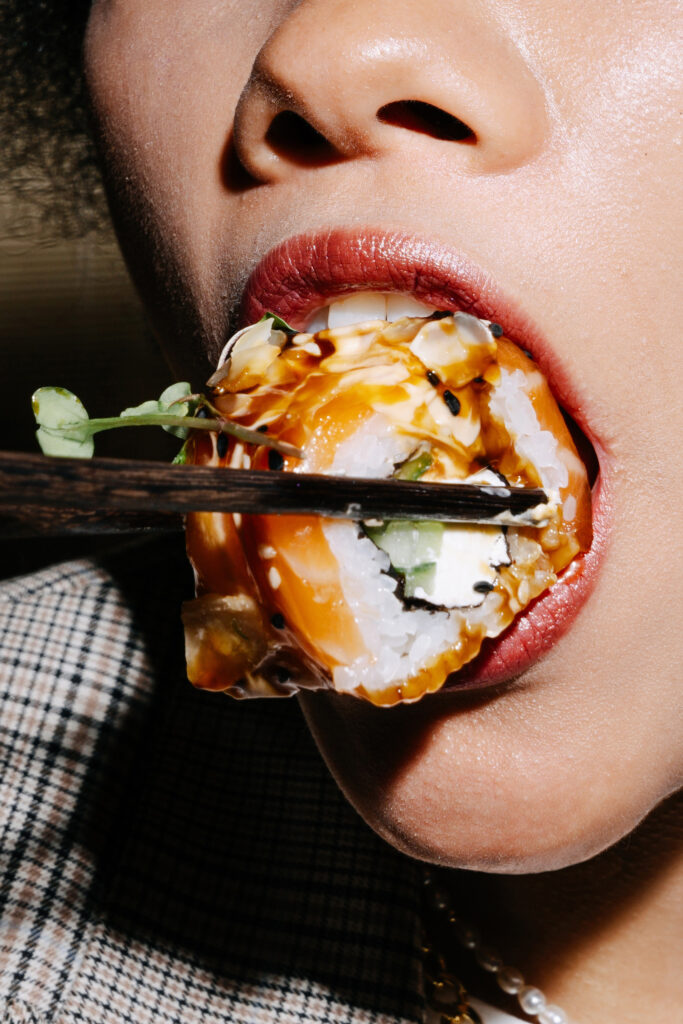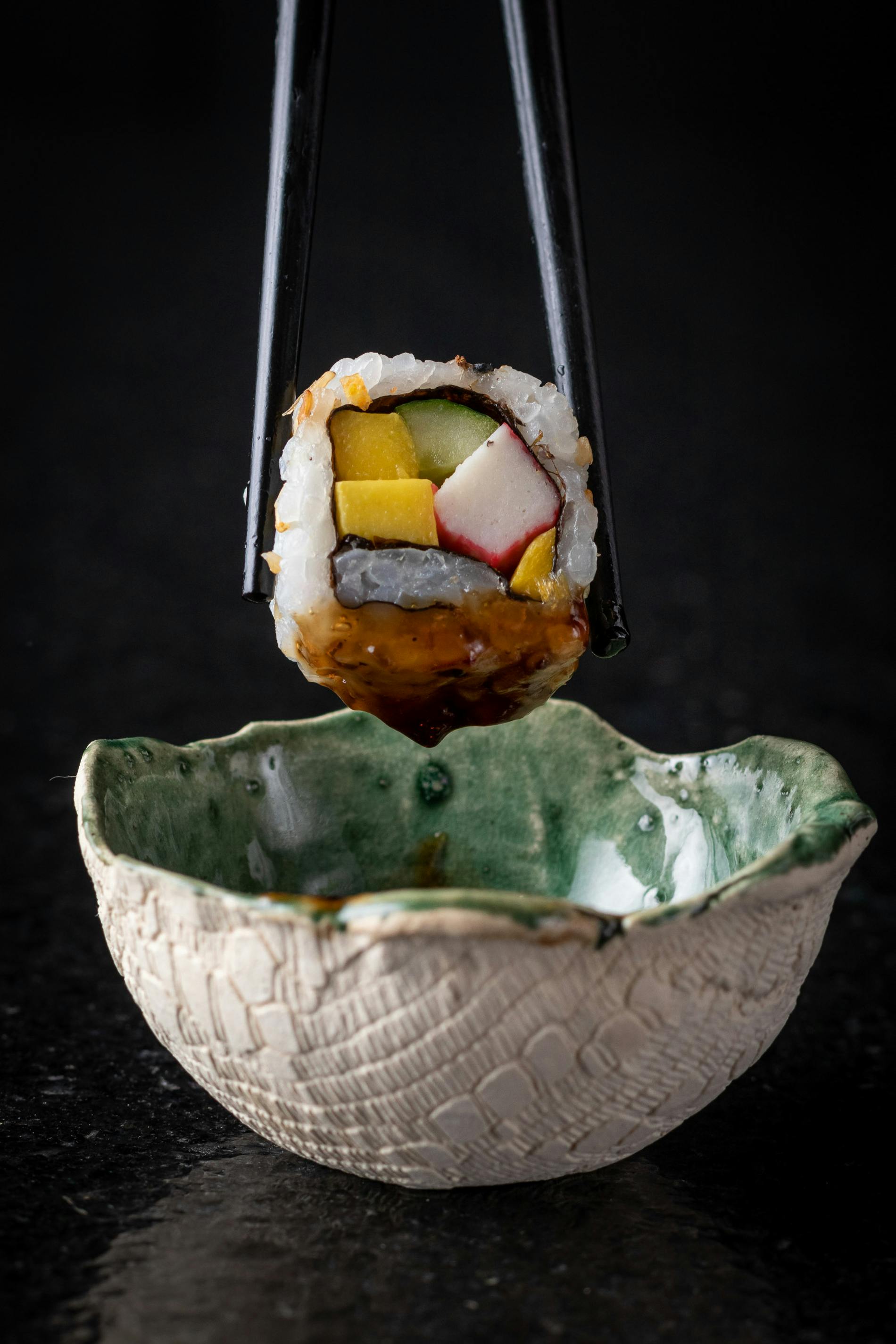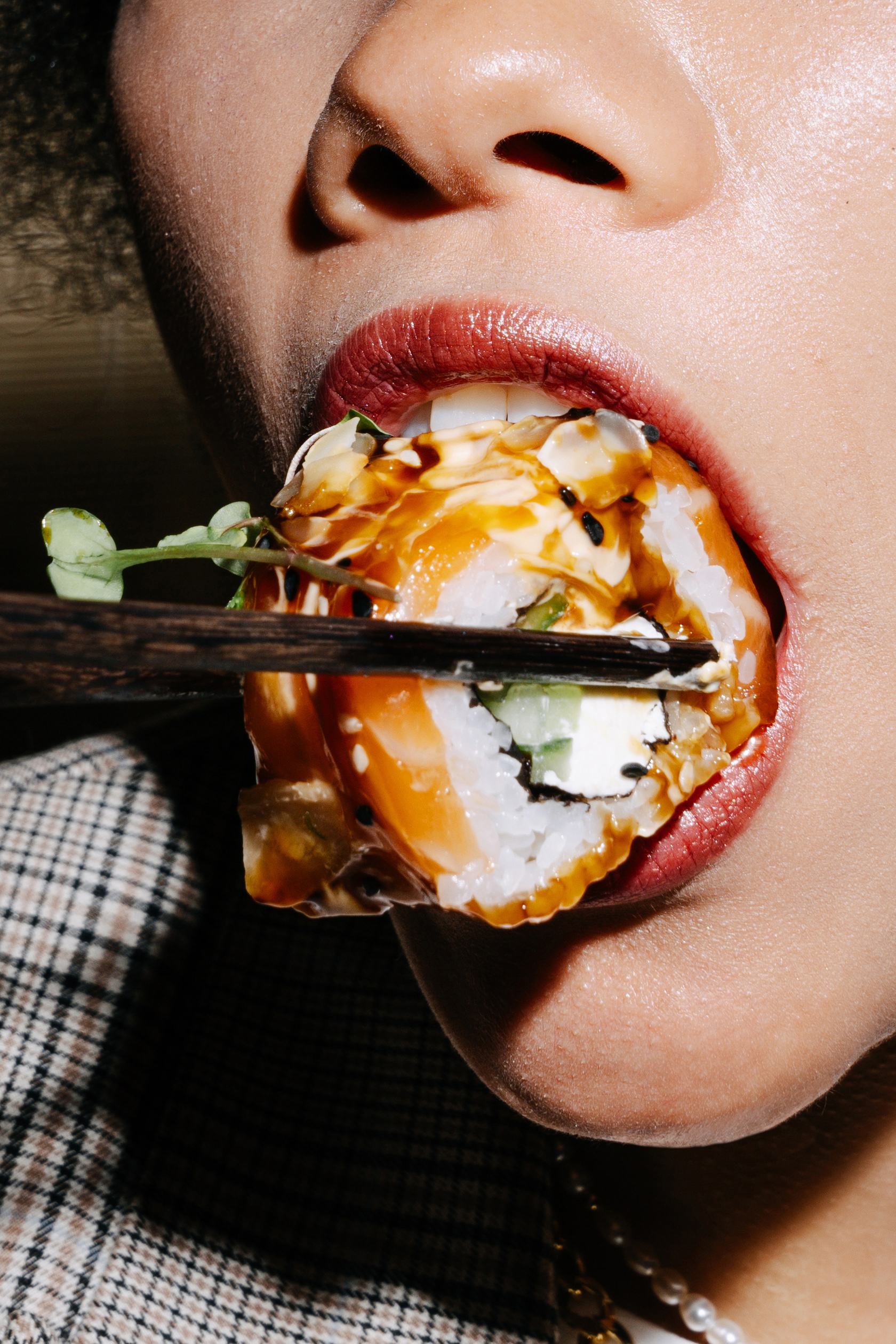Immerse yourself in the rich heritage of food as you explore the captivating history of sushi, from ancient Japan to its current status as a global phenomenon. With Tastepan.com, your journey into the diverse world of food culture and traditions begins as you delve into culinary histories, regional cuisines, and food-related stories that will deepen your appreciation for the global tapestry of flavors. Let us take you on a fascinating exploration of the origins and evolution of sushi, tracing its roots in ancient Japan to its widespread popularity around the world today.

Origins of Sushi in Japan
Sushi, a beloved and internationally recognized dish, has a rich history that dates back centuries in Japan. Let’s take a journey through time and explore the origins and evolution of sushi, from its humble beginnings to its status as a global culinary phenomenon.
Sushi in Ancient Japan
The story of sushi begins in ancient Japan, where it was first developed as a method of preserving fish. In a time when refrigeration did not exist, the locals needed a way to store their catch for extended periods. This necessity led to the birth of “narezushi” – fermented fish wrapped in sour rice.
The Beginnings of Narezushi
Narezushi, the precursor to modern sushi, involved packing salted fish between layers of cooked rice and fermenting the mixture for months. As time went on, a unique transformation occurred – the rice began to break down the fish, resulting in an umami-rich, flavorful delicacy.
The Evolution of Sushi
Over time, sushi continued to evolve, transitioning from a preservation technique to a culinary tradition. The Japanese discovered that by shortening the fermentation period, the fish retained its freshness and flavor. This led to the creation of “namanarezushi,” which omitted the long fermentation process.
The Role of Fish Preservation
Fish preservation played a pivotal role in the development of sushi. The ancient Japanese developed various preservation techniques to ensure the availability of fish year-round.
The Art of Fermentation
The fermentation process used in narezushi was a groundbreaking discovery. Not only did it allow fish to be preserved, but it also transformed it into a delicious and unique dish. The fermentation process resulted in a tangy, umami flavor that became synonymous with sushi.
Introduction of Rice
The introduction of rice into the fish preservation process was a game-changer. The rice acted as a natural barrier against spoilage and provided a stable environment for fermentation. This crucial addition laid the foundation for the sushi we know today.
Nigiri Sushi: A Game-changer
The emergence of nigiri sushi marked a turning point in sushi’s evolution. Nigiri, meaning “to press,” involved placing slices of fish on top of bite-sized rice portions. This technique allowed the flavors of the fish and rice to meld together, creating a harmonious balance. Nigiri sushi became a popular choice for its simplicity and elegance.

Edo Period: The Birth of Modern Sushi
The Edo period (1603-1868) witnessed significant advancements in sushi preparation and culture. Sushi transitioned from a preservation method to a delectable delicacy enjoyed by the masses.
The Emergence of Edo-style Sushi
Edo-style sushi originated in Tokyo during the 19th century. The development of refrigeration techniques enabled sushi chefs to serve fresh fish without the need for fermentation. This led to the creation of “edomae sushi,” which emphasized the natural flavors of the fish.
Innovations in Sushi Preparation
During the Edo period, sushi chefs pioneered various techniques to enhance the dining experience. Sliced ginger, known as “gari,” was introduced to cleanse the palate between different sushi varieties. Additionally, wasabi began to be served alongside sushi to complement the flavors and provide a hint of spiciness.
The Influence of Street Food Culture
Edo-style sushi gained popularity through the emergence of street food culture in Japan. Affordable and accessible, sushi became a staple for the masses. Sushi stands, known as “sushiya,” began to line the streets of Tokyo, allowing people to indulge in this delectable cuisine.
Sushi Spreads to the World
Sushi’s journey from Japan to international stardom is a testament to its universal appeal. Let’s explore how sushi made its way around the world and captivated the taste buds of people everywhere.
The Influence of Japanese Emigrants
Japanese emigrants played a crucial role in spreading sushi beyond the shores of Japan. As they traveled across the globe, they brought their culinary traditions with them, including the art of sushi-making. With each new destination, sushi found a home and gradually gained popularity worldwide.
Sushi in the United States
Sushi made its grand entrance into the United States in the mid-20th century, primarily in cities with large Japanese immigrant populations. Initially met with skepticism, sushi gradually gained acceptance and eventually became a mainstream favorite. Today, sushi bars and restaurants can be found in every corner of the country.
Sushi’s Global Popularity
The rise of sushi’s global popularity can be attributed to its unique flavor profile, aesthetic presentation, and health benefits. As people seek diverse and healthy dining options, sushi provides a perfect solution. From Europe to Asia, Africa to Australia, sushi has become a beloved and integral part of countless culinary landscapes.

The Anatomy of Sushi
To truly appreciate sushi, it’s essential to understand the different types and styles that comprise this delectable cuisine. Let’s explore the various forms of sushi that have captured the hearts and palates of food lovers worldwide.
Nigiri Sushi
Nigiri sushi, the epitome of simplicity and elegance, consists of a slice of raw fish delicately placed on a hand-formed mound of sushi rice. The flavors meld seamlessly, allowing the freshness and quality of the fish to shine.
Maki Rolls
Maki rolls, also known as sushi rolls, are perhaps the most recognizable form of sushi. A layer of sushi rice is wrapped in a sheet of seaweed, known as nori, and filled with a variety of ingredients such as fish, vegetables, and condiments. The rolls are then sliced into bite-sized pieces.
Temaki
Temaki, meaning “hand roll,” is a cone-shaped sushi roll filled with a combination of ingredients. The nori is wrapped around the fillings, creating a portable and convenient way to enjoy sushi.
Chirashi
Chirashi, or “scattered sushi,” is a bowl of seasoned sushi rice topped with an assortment of sashimi, vegetables, and other ingredients. This visually appealing dish offers a delightful medley of flavors and textures.
Inari Sushi
Inari sushi is a unique form of sushi where the rice is placed inside a pouch made from sweetened tofu skin. It is a sweet and savory treat, often enjoyed as a snack or appetizer.
Sushi Etiquette and Traditions
Partaking in the sushi experience is not just about the taste, but also about honoring the customs and traditions that surround it. Here are some essential sushi etiquette tips to ensure you navigate the sushi world with finesse.
Proper Use of Chopsticks
When enjoying sushi, it is customary to use chopsticks for picking up sushi pieces. However, if you feel more comfortable using your hands, that is also acceptable. The key is to be respectful and considerate of the sushi chef’s craftsmanship.
Using Soy Sauce and Wasabi
When dipping nigiri sushi into soy sauce, do it with caution and moderation. It is customary to lightly dip the fish side into the soy sauce, avoiding soaking the rice. If additional wasabi is desired, it can be added to the soy sauce or directly to the fish.
Order of Eating Sushi
When presented with an assortment of sushi, it is customary to eat them in a specific order. Start with the lighter, more delicately flavored options and progress towards the stronger and bolder flavors. This allows for a gradual appreciation of the different tastes.
Sushi Etiquette in Japan
When dining at a traditional sushi restaurant in Japan, there are additional customs to be aware of. It is customary to greet the sushi chef with a respectful nod or a simple “arigatou gozaimasu” (thank you) upon entering. It is also customary to eat sushi immediately after it is served, as it is intended to be consumed at its freshest.
Sushi-Related Festivals and Customs
Sushi is not just a dish; it is also a part of various festivals and customs in Japan. These celebrations highlight the cultural significance and joy that sushi brings to people’s lives.
Setsubun: The Maki Roll Tradition
Setsubun, a traditional Japanese festival held on February 3rd, is celebrated with a special sushi tradition. People gather to make and eat large maki rolls called “ehoumaki.” It is believed that by eating the entire roll in silence while facing a specific direction, good fortune will be bestowed upon them for the year.
Sushi and Celebrations
Sushi has become an integral part of celebratory occasions in Japan. Whether it’s a wedding, birthday, or New Year’s festivities, sushi is often included in the festivities as a symbol of abundance and good fortune.
Sushi and Religious Ceremonies
Sushi is also associated with religious ceremonies and rituals in Japan. It is often offered as an offering at Shinto shrines during festival days. The act of presenting sushi as an offering is seen as a way to express gratitude and seek blessings.
Sustainability and Sushi
As sushi’s popularity continues to soar, it is crucial to address the sustainability of seafood resources. The industry is making significant strides to ensure the longevity of fish populations and the preservation of ocean ecosystems.
The Impact of Overfishing
Overfishing is an ongoing concern that threatens the delicate balance of marine ecosystems. The high demand for sushi ingredients, such as tuna and salmon, puts tremendous pressure on these fish populations. Sustainable fishing practices and responsible sourcing are essential to protect the ocean’s biodiversity.
The Rise of Sustainable Sushi
Many restaurants and sushi establishments are taking steps to promote sustainable sushi. They are partnering with organizations that provide seafood certifications, ensuring that the fish used in their sushi is sourced ethically and responsibly. By supporting sustainable sushi, we can contribute to the conservation of our oceans.
Eco-friendly Sushi Practices
Innovations in sushi preparation are also contributing to eco-friendly practices. The use of alternative ingredients such as plant-based fish substitutes and locally sourced produce reduces the carbon footprint associated with long-distance transportation. Additionally, efforts in waste reduction, such as using compostable packaging and implementing recycling programs, further promote sustainability in the sushi industry.
Sushi Fusion: Innovation Meets Tradition
As sushi became a global phenomenon, chefs around the world began infusing traditional Japanese techniques with their own cultural flavors. This fusion of innovation and tradition has resulted in a myriad of exciting and unique sushi creations.
The Birth of Fusion Sushi
Fusion sushi is an exciting blend of traditional Japanese sushi and ingredients and flavors from other cuisines. From the use of tropical fruits in sushi rolls to the incorporation of spicy mayonnaise in nigiri, fusion sushi showcases the creativity and adaptability of this beloved cuisine.
Regional and Cultural Influences
Sushi has seamlessly integrated into the culinary landscapes of various countries, resulting in regional and cultural adaptations. In Hawaii, for example, the introduction of the “poke” bowl combines fresh fish, rice, and local ingredients. Each region puts its own spin on sushi, creating a diverse range of flavors and styles.
Creative Sushi Trends
The sushi world is constantly evolving, with chefs pushing the boundaries of creativity and experimenting with unique ingredients and techniques. Sushi burritos, sushi donuts, and sushi burgers are just a few examples of the imaginative and visually stunning sushi creations that have captured the attention of food enthusiasts.
The Future of Sushi
As we gaze into the future, it is evident that sushi will continue to captivate the hearts and palates of people all over the world. However, certain trends and advancements may shape the way we enjoy this beloved dish.
Technological Advancements
Advances in technology may revolutionize the sushi industry. From sushi-making robots to automated sushi conveyors, these innovations can streamline production and enhance the dining experience. However, it is essential to find a balance between technology and the craftsmanship that makes sushi so special.
Changing Consumer Preferences
As consumer preferences evolve, sushi establishments may need to adapt to cater to different dietary needs and preferences. The rise of plant-based diets and sustainable seafood alternatives may lead to the inclusion of more vegetarian and vegan sushi options. Additionally, the demand for locally sourced and organic ingredients may become increasingly important.
Preserving Traditional Techniques
While innovation is exciting, it is equally crucial to preserve the time-honored techniques that define sushi. Traditional sushi-making methods passed down through generations hold cultural significance and provide a connection to the roots of this remarkable cuisine. Ensuring the continued practice of these techniques is vital in maintaining the authenticity of sushi.
In conclusion, the history and evolution of sushi from its humble origins to its current global popularity is a testament to its enduring appeal. As we continue to appreciate and enjoy sushi, let us do so with an understanding of its rich heritage, respect for its customs, and an ongoing commitment to sustainability. Sushi truly embodies the meeting of tradition, innovation, and the universal love for delectable cuisine.

